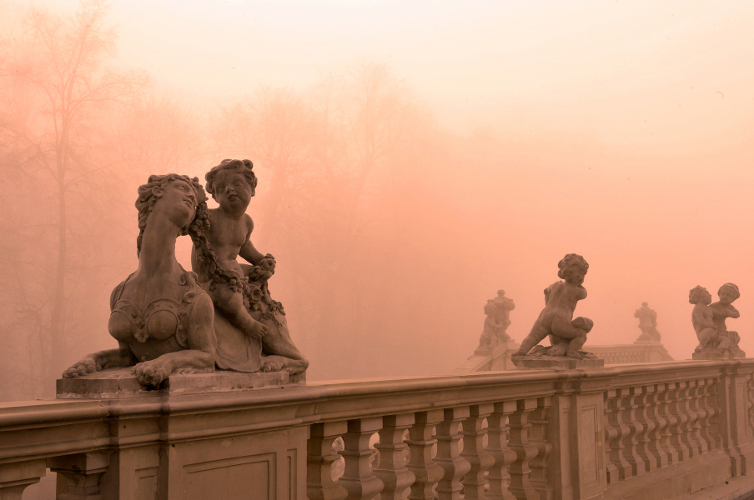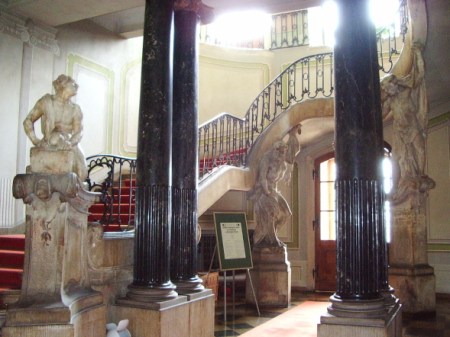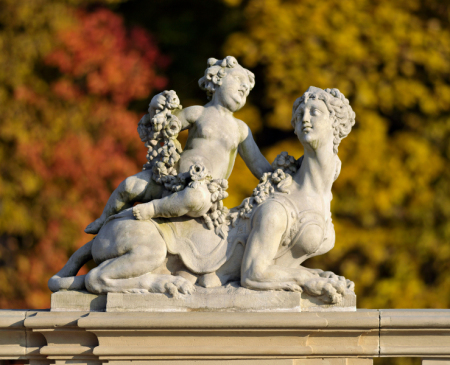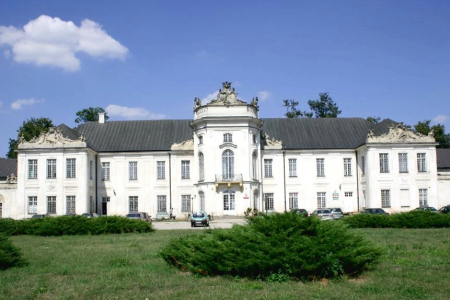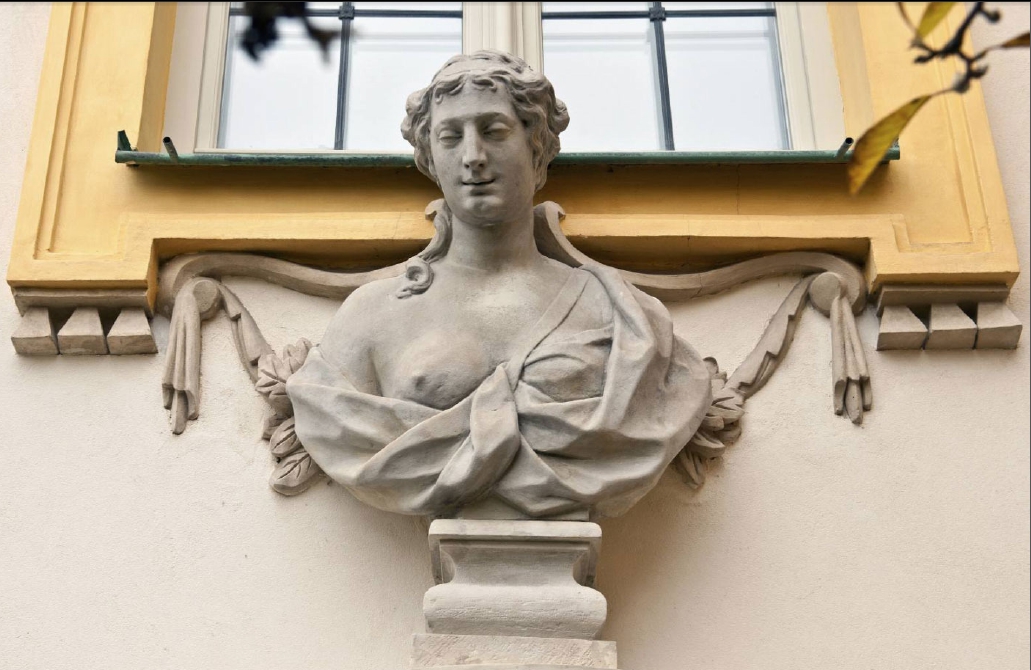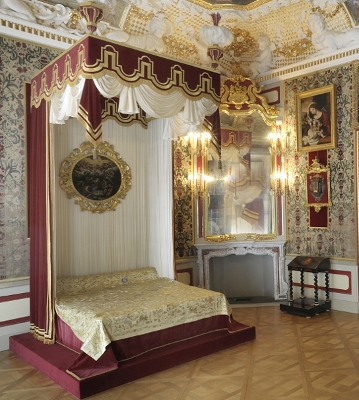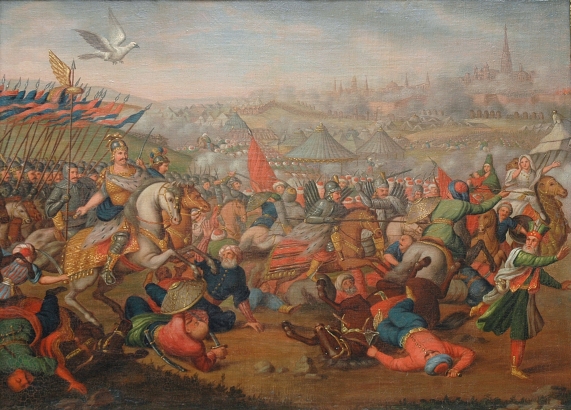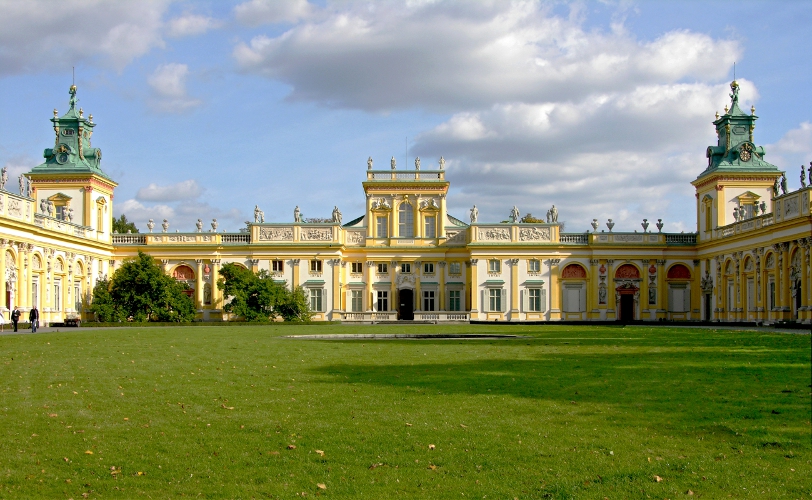Johann Chrisostomus Redler, a magnates’ sculptor of the eighteenth century
Johann Chrisostomus Redler (also referred to in sources as Redtler, Rödler, or Regler) was one of the sculptors responsible for the formation of what might be called a school of Rococo sculpture in Warsaw in the 1740s–60s, playing a part in the rise of the capital as an artistic centre in the Commonwealth. Next to Johann Georg Plersch, Redler proved to be the most important figure in this milieu both in terms of his professional standing and the number of commissions he received. However, in contrast to Plersch, a royal artist employed in the Saxon Construction Office and frequent recipient of commissions from the Church, Redler worked mostly for private, magnate investors: representatives of the Czartoryski ‘Familia’, Grand Hetman of the Crown Jan Klemens Branicki, Grand Marshal of the Crown Franciszek Bieliński, General of Lithuanian Artillery Eustachy Potocki, and Saxon minister Heinrich Brühl. Toward the end of his life, he also supervised projects for King Stanisław August at the Royal Castle and in the Ujazd palace and park, as major commissions from magnates became less frequent. Thus, his projects are tied to the most important patrons of the period, primarily magnates of the Crown, officials, and associates at the royal court. For over three decades, Redler managed a major workshop in Warsaw, though most of his works ended up in provincial residences. At the same time, he never left his workshop unless he was forced to do so by the more esteemed patrons or by the necessity of supervising works on location (primarily in the 1750s in palaces at Białystok, Radzyń Podlaski, and Wołczyn).
Attempts at reconstructing Redler’s biography are troubled by the dearth of information about his private life. The place and date of the sculptor’s birth remain unknown, as is the date of his death, although it seems he remained professionally active until the very end, working at the Warsaw Castle. Like many artists and craftsmen active in the capital during the reign of both kings of the Wettin dynasty, he was of German nationality. Stylistic analysis of his oeuvre suggests that he may have been born in Habsburg lands or in southern Germany. The said works include wood carvings and stuccowork, but most of all sculptures in the soft sandstone, a material he mastered to perfection. The fact that he produced small wooden figures for cabinets and decorative wood carvings (for instance, for the Białystok palace), ornamental stuccoes (at the Royal Castle in Warsaw), and altar statues in the same material (for the Warsaw church of Dominican Observants) is only known from archival sources. But his mastery of the large-scale ornamental and figural stone sculpture on secular themes — primarily palace decorations and individual garden statues that perfectly suited the artistic programmes of the residences — is beyond question. He also produced marble gravestones and epitaphs with medallions and head-and-shoulders portraits (e.g. the lost epitaph of Ambroży Czempiński, d. 1768, formerly at Augustian church of Saint Martin in Warsaw) and statues for pediments of churches. Of Redler’s enormous output recorded in archival sources, the outstanding complex of architectonic decorations at the palace in Radzyń Podlaski survived almost in its entirety (be it with obvious reparations following war damages). Only fragments remain of the sets of figures at Białystok, Wilanów, and Puławy.
Redler’s versatility, combined with his impressive ease of skill, was undoubtedly the fruit of his education and professional experience gained within artistic milieus outside of the Commonwealth — most likely in a workshop in Austria. General formal characteristics of his works suggest a contaminated influence of Viennese sculpture of Italian derivation of the first quarter of the eighteenth century, perhaps ‘filtered’ through the Prague school of sculpture. The well-developed anatomy of his figures, their themes and typology (e.g. the highly vivid and stark putti, allegories, heraldic decorations), drapery compositions, along with the panache, dynamism, and the picturesque character of his works, combining into a total stylistic approach, find parallels in the peculiar classicism of certain masters, like Giovanni Giuliani, but especially the court sculptor of Emperor Charles VI, Lorenzo Matielli and his enormous workshop, responsible for the sculptural decoration of numerous palaces in Vienna, Lower Austria, and Moravia. The uneven textures of Redler’s works, on the other hand, may have derived from his acquaintance with the oeuvre of the Prague Baroque artist Matthias Bernard Braun.
The huge popularity and market success of the sculptor resulted for the most part from his courage in accepting enormous commissions which required sound logistics, a perfectly organised workshop, flexibility, and a willingness to adjust to the demands of both investors and cooperators. He also commanded competitive prices (a practice which attracted much flak), accepting, for instance, payments in one lump sum. For years, he and his long-time collaborator, stonemason Michael Dollinger, loaned a quarry at Skała near Kunów, a source of quality decorative sandstone he needed for his realisations. Commissions were all the easier to come by thanks to a regular cooperation — almost a partnership — throughout the 1750s and 1760s with the popular Warsaw architect Jacopo Fontana. Fontana might be the force behind some of Redler’s realisations, particularly the original Rococo compositions at the attics of the palace in Radzyń Podlaski — though the sculptor was likely given much latitude in perfecting the original concept. Redler’s wife was a decorative artist specialising in painting cloth and wallpapers in Chinese style for palace interiors. The two frequently cooperated, for instance when decorating the boudoir at the Warsaw palace of Jan Klemens Branicki (1756–7) or for Eustachy Potocki at Radzyń.
Radler was probably born around 1710. He arrived in Warsaw around the mid-1730s — most likely as the war of succession abated — on the invitation of one of the major magnate families (perhaps the Czartoryskis) seeking artists for one of their ‘factories’. Redler’s name is first mentioned in an entry in the registry of the collegiate church of Saint John in Warsaw, recording his marriage to Anna Maria Kitzinger — most likely the aforementioned painter — on 7 February 1737. The witnesses were Carlo Antonio Bay, an architect of great esteem in the capital, and the aforementioned famous sculptor Johann Georg Plersch, soon to enjoy a rich relationship with Redler both as a colleague (for instance, the former often called upon the latter when he needed white marble for his own projects) and a competitor on the same market.
The year 1743 marks the first mentions of Redler’s relationship with Jan Klemens Branicki, who remained the artist’s most important patron until his death in 1771 (the relationship had likely began earlier, perhaps with Plersch introducing Redler to Branicki as his protégé in 1738). Grand Hetman of the Crown, subsequently Chatelain of Cracow and contender for the crown in 1764, was known across the Commonwealth for his fine artistic taste, and his ‘capital’ in Białystok earned the distinction of ‘Poland’s Versailles’. For three decades, Branicki consistently employed Redler, both as executor of decorations in the magnate’s palaces in Białystok and Warsaw, and as a consultant assessing the work of his court artists and craftsmen, made according to Redler’s models. Branicki also tasked him with assessment or selection of carvers and masons to hire. At the same time, the Hetman took the sculptor under his wing, defending him before other authorities on numerous occasions — for instance, when the sculptor was put before the Warsaw magistrate and threatened with imprisonment under a supposedly wrongful accusation of another craftsman, Hetman Branicki hid the artist in his palace.
The aforementioned archival note from 1743 — the earliest known mention of Redler’s activities in historical sources — mentions his works (since lost) in Branicki’s Warsaw palace at the Podwale, which was being built at that time. The works were supposed to include stuccoes on the ceilings of grand apartments, unspecified wood-carvings, and figural decorations for the garden. Besides, Redler was given permission to correct the work of other sculptors, that is, the decorations of the palace attics made by masons from Gdańsk — a fact that testifies to his high professional standing already at that time.
In 1749–50, the artist carved busts of the four Evangelists for the entrance gate of the parish church at Tykocin to designs by the Hetman’s court architect, Johann Heinrich Klemm. Since around 1750 until 1771 (the main works took place between 1752 and 1758), he executed various orders for sculptural decorations in the Białystok palace and park. Initially, they included stone sculptures for the park by the palace — fountain statues (since lost), vases and herms for the ground level and the lanes, and two groups of lying sphinxes mounted by putti, situated at the entrance to the bridge over a garden canal. The sphinxes, a Rococo travesty of sculptures found in the garden at Versailles, highlight another aspect of Redler’s art by proving his capacity to creatively implement patterns borrowed from French originals, known from graphical renditions. The following years saw him employed in significant works intended for the palace itself — the figural decoration of the main staircase designed by Fontana, for which Redler produced two statues of Atlantes supporting the stairs and a youth sharpening a stone (1755). The figure, known as Rotator, is another Rococo interpretation of an ancient sculpture known, for instance, from copies found in Versailles. In 1757–8, the artist contributed to the symbolism of the frontal side of the palace by executing two dynamic and monumental groups depicting the labours of Hercules (the struggle against the dragon Ladon and the fight with Hydra), placed at the gate between the courtyards. These figures, in turn, clearly relate to sculptures from the circle of artists at the Habsburg court, which delighted in using Herculean motifs for the purposes of the iconography of the ruling dynasty.
Redler’s documented association with the Czartoryski family dates to the mid-1740s, when prince Aleksander August and his wife Maria Zofia née Sieniawska decided to rebuild the interiors of their home in Puławy and modernise it according to Rococo fashion. Around 1745, a design was submitted for the main body of the palace to be extended by additional arcades and flanking pavilions with attics adorned by several dozens of figures and over a hundred vases. This enormous decorative undertaking was assigned to court sculptors at Puławy and Redler’s workshop, but the project was eventually abandoned and never saw the light of day. Instead, the period bore fruit in the surviving graceful pairs of prancing putti decorating the exterior stately stairs, produced by Redler in sandstone from Kunów — perhaps based on models prepared by court sculptor Elias Hoffmann, director of works at Puławy.
Redler and his workshop are also associated with the existing sculptural decorations of the bannister at the upper terrace at Puławy and the garden stairs at the residence of the Voivodes of the Rus’ near Warsaw — in Wilanów, the greatest surviving monument to their activities as founders of artistic efforts at that palace. The main protagonist of that latter group is a putto — the figure of a child depicted with exceptional relish and precision. Like at Puławy, the decoration also includes four similar groups of prancing putti symbolising the Four Stages of Love (Courtship, Kiss, Scaring, Fight) giving in to the impact of time symbolised by the Four Seasons — at the same time, a metaphor of the Four Stages of Human Life personified by the sitting figures bearing respective attributes. The program thus conceived is supplemented with figures of sphinxes mounted by putti and two pairs of individual putti, including one holding baskets of flowers. At Wilanów, according to written records, Redler also executed new Atlantes adorning the palace towers in 1748. In his later works, the artist frequently alluded to the works he performed at Puławy and Wilanów. This pertains particularly to figures representing children, whose accurate characterisation, perfectly capturing anatomical detail, clumsiness, and simultaneously a benevolence in gestures, became a hallmark of his mastery. Numerous figures found among the decorations in the Radzyń palace attest to that, as do two putti at the urn on the gravestone of Maria Anna Brühl at the Capuchin church in Warsaw (made in 1761; the putti are seen toying with soap bubbles sent toward the heavenly light beaming from the lantern of the chapel’s cupola; the gravestone was initially located directly under the cupola) or those at the gazebo in the garden of today’s Primate Palace (formerly the palace of Pierre Riaucour).
Redler also accepted orders from another leader of the party of the ‘Familia’, the Grand Chancellor of Lithuania Michał Fryderyk Czartoryski. In 1755, 1757, and 1758, he travelled to the Chancellor’s residence at Vowchyn in the Brest-Litovsk Voivodship. It was probably in that period that he executed the remaining monumental figures of the Evangelists for the façade of the church of the Holy Trinity. In 1765–6 he designed a monument to Czartoryski, with the subject seated; drawings for the statue are a part of the collection of Stanisław August stored at the Drawings Cabinet of the Library of the University of Warsaw.
Beginning in 1752 until at least 1763 Redler concluded subsequent stages of sculptural decorations for the residence of the Cup-Bearer of the Crown, General Eustachy Potocki at Radzyń Podlaski, rebuilt to designs by Jakub Fontana. These included stone decorations on the façade of the main building, wings, and inside the palace palace, as well as the orangery in the garden, and perhaps even the execution of stucco ornaments on the ceilings and a stucco scene depicting Zephyr and Flora, located in a tympanum at the garden façade. Due to its scale, variety, and condition, the decoration project at Radzyń is Redler’s magnum opus. It consists of several dozen figural sculptures (including numerous putti), cartouches with coat-of-arms, acroters, panoplies, rocailles dressed up in rich and fanciful ornamentation. The bountiful, complex program highlighted motifs relating to the coats-of-arms of the owners — Potocki and his wife — and their happy union. Among the more significant remaining works attributed to Redler in archival documents are: four groups of the labours of Hercules (the struggles against the Nemean Lion, Lernaean Hydra, Cretan Bull, and the dragon), located antithetically at the finials of the palace gates on the side of the grand courtyard; allegorical compositions with jumping horse and deer over central projections of both wings; allegories of Military Architecture and Civil Architecture at the gate leading to the city. The statues adorning the Radzyń orangery are particularly accomplished, with a light and dynamic group of Apollo’s Chariot alluding to French sculpture, as illustrated in graphical compendia.
Redler’s final works recorded in sources were the ornamental stucco decorations in the Royal Castle interiors (which survived until World War II) — in the Hall of the Crown’s Horse Guards, at the Grand Staircase, and in the Marble Hall, executed to the order of Stanisław August after 1767. Formal analysis also allows for the group sculpture of Satyr with a Bacchante — executed for the King and moved to the front of the Palace on the Water at Łazienki — to be attributed to Redler. Redler’s latest known work were the figural decorations of the stucco altars at the Warsaw church of Dominican Observants, completed in 1772–3 (sculptures of two saints and eight putti). The temple was demolished in 1818 and the altars were lost.
Redler’s stylus is also associated with a string of other works within Warsaw, most of them lost; among them, of particular interest are the sculptures adorning the gate and façades of the palace of Heinrich Brühl at Wierzbowa Street (destroyed in 1944) and statues on the façade of the Bieliński Palace at Królewska Street (demolished in 1896).
Bibliography:
A. Badach, ‘Klasyczne wzorce i rokokowe innowacje w dekoracjach kilku rezydencji polskich w XVIII wieku’, Biuletyn Historii Sztuki LXIII (2001), no. 1–4, p. 193–210.
A. Bartczakowa, Jakub Fontana, architekt warszawski XVIII wieku, Warszawa 1970.
T. Dziubecki, ‘Rotator w Wersalu Podlaskim’, in: Artyści włoscy w Polsce. XV–XVIII wiek, Warszawa 2004, p. 657–660.
J. Gajewski, ‘Z Wiednia i Pragi (?), przez Łubnice do Puław. Działalność Jana Eliasza Hoffmanna i jego warsztatu w Lubelskiem oraz nurt hoffmannowski w rzeźbie późnobarokowej między Wisłą a Bugiem’, in: T. Chrzanowski (ed.), Dzieje Lubelszczyzny, tom 6: Między Wschodem a Zachodem, część 3: Kultura artystyczna, Lublin 1992, p. 196–214.
K. Gombin, Inicjatywy artystyczne Eustachego Potockiego, Lublin 2009.
T. St. Jaroszewski and J. Kowalczyk, ‘Artyści w Puławach w XVII wieku (w świetle ksiąg metrykalnych parafii włostowickiej)’, Biuletyn Historii Sztuki XXI (1959), no. 2, p. 213–221.
M. Karpowicz, Sztuka polska XVIII wieku, Warszawa 1985.
J. Kowalczyk, ‘Les modelès français dans l’art polonais a l’époque du rococo’, Polish Art Studies XIII (1992), p. 45–58
K. Mikocka-Rachubowa, ‘Redler Johann Chrisostomus’, in: Słownik artystów polskich i obcych w Polsce działających (zmarłych przed 1966 r.). Malarze, rzeźbiarze, graficy, vol. VIII, Warszawa 2007, p. 265–272.
A. Oleńska, ‘“Sekretne treści” pałacu w Białymstoku. O Figurze Rotatora na klatce schodowej’, in: Artyści włoscy w Polsce. XV–XVIII wiek, Warszawa, 2004, p. 643–656.
A. Oleńska, ‘Wątki heroiczne w programie dekoracji białostockiej rezydencji Jana Klemensa Branickiego’, in: T. Kostkiewiczowa and A. Roćko (eds.), Dwory magnackie w XVIII wieku, Rola i znaczenie kulturowe, Warszawa 2005, p. 245–262.
A. Oleńska, Jan Klemens Branicki — ‘Sarmata nowoczesny’. Kreowanie wizerunku poprzez sztukę, Warszawa 2011.
A. Oleńska, ‘Kościół parafialny p.w. Św. Trójcy w Wołczynie’, in: Materiały do dziejów sztuki sakralnej na ziemiach wschodnich dawnej Rzeczypospolitej, część V: Kościoły i klasztory dawnego województwa brzeskolitewskiego, vol. 1, Warszawa 2013, p. 167–232.
J. Sito, ‘Fenomen rzeźb Johanna Chrisostoma Redlera’, in: Radzyń Podlaski. Miasto i rezydencja, Radzyń Podlaski 2011, p. 101–117.
Translation: Antoni Górny
